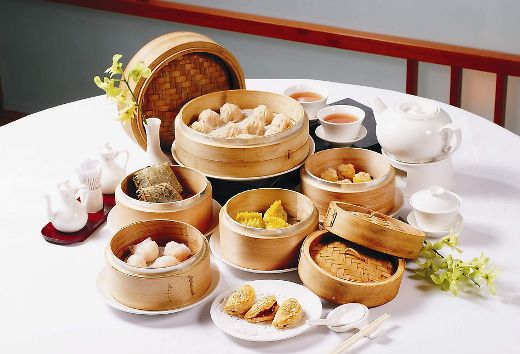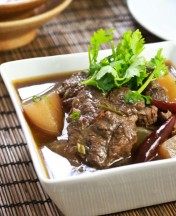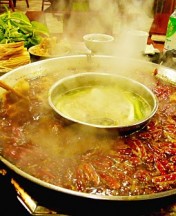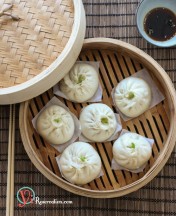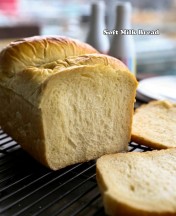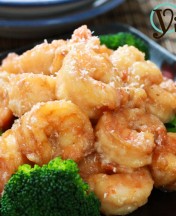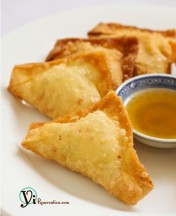Chinese Cooking Starter Kit
So you love food and you have done some basic cooking at home.
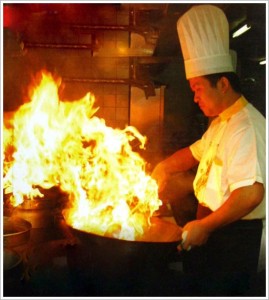 Now, after browsing through many food blogs including the one you are on right now, you have decided that today is the day to try some Chinese recipes you’ve collected.
Now, after browsing through many food blogs including the one you are on right now, you have decided that today is the day to try some Chinese recipes you’ve collected.
To help those of you who are less familiar with Chinese cooking, I thought it would be nice to create a short list of basic kitchen equipments and ingredients that I routinely use to cook Chinese cuisines.
If you have no interest in learning Chinese cooking or you have done a good amount Chinese cooking at home, you can ignore this announcement.
However if you are… slightly interested in getting introduced to Chinese cooking, you should make sure you have the following items in your kitchen.
Essential Equipments
Wok is one of the most commonly used cooking equipment in China and many other East and Southeast Asian countries. A wok is so versatile that I use for pretty much everything including stir-frying, steaming, stewing, soup making, and even smoking (yes I did smoke my fish in my wok!!).
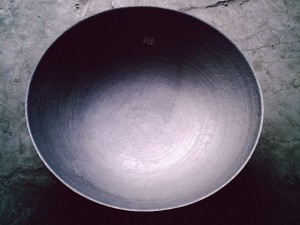 Woks come in different materials. A carbon steel wok is light-weight and easy to handle. It is also inexpensive and requires very little caring – making it perfect for first time wok-owners and beginners. A thin-walled cast iron wok is slightly heavier but with some good seasoning it becomes less prone to sticking. I’ve owned many woks but my current main wok is a 3-year old 16-inch cast iron wok. After three years of consistent use, this wok has gotten a pretty good seasoning that my wok imparts “wok hee” (wok flavor)!
Woks come in different materials. A carbon steel wok is light-weight and easy to handle. It is also inexpensive and requires very little caring – making it perfect for first time wok-owners and beginners. A thin-walled cast iron wok is slightly heavier but with some good seasoning it becomes less prone to sticking. I’ve owned many woks but my current main wok is a 3-year old 16-inch cast iron wok. After three years of consistent use, this wok has gotten a pretty good seasoning that my wok imparts “wok hee” (wok flavor)!
Regardless the type of wok you pick up, make sure you get a wok with the right size. If you only do quick stir-fry, then a 14-inch wok could be ideal. If you foresee yourself steaming a whole fish, you’ll probably need a wok 16-inch or above. The larger the wok it more versatile it gets however the trade off is it becomes progressive harder to handle. Also, if you have an eclectic stove, make sure you get a flat bottom wok instead of a traditional round bottom one.
Wok Accessories can help you maximize the potential of your wok. I have included a few of my favorite wok accessories here:
Wok Lid is essential if you plan to steam and stew in a wok. Get a dome shaped wok lid that can maximize the volume of your wok.
Wire Steam Rack holds food over boiling water and allows you to steam food in a wok.
Spatula is shovel-looking tool that is essential for stir-frying food in a wok. The traditional Chinese spatula is made of stainless steel. In the modern age, you can also get the Chinese spatula in wood or silicon.
Wired Mesh-strainer allows you to quickly removed boiled or fried food in mass from the wok. It also drains the liquid.
Rice cooker can help you make perfectly steamed rice effortlessly. The best part of using a rice cooker is that you do not need to tend to it the way you do when cooking with a pot on stove top. Pick the rice cooker that fits your need and you will not worry about burning or scotching rice again.
Chinese cleaver (optional) – in China, many households only own one knife and that is a Chinese clever. Contrary to the common belief, Chinese cleaver is not a butcher’s knife but rather a multi-purpose knife that allows you to slice, cut, bone, and butcher. However, if you already own a set of Western knives you can certain go without a Chinese cleaver.
Condiments
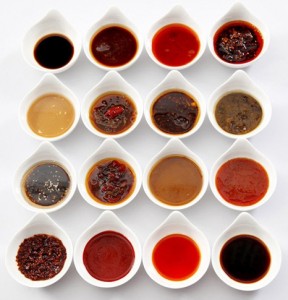 If you were to visit my pantry, you’d find dozens of different Chinese condiments and sauces ranging from soy sauce to exotic fish paste from a particular region in Canton. However, if you are looking to cook some basic Chinese dishes, you’ll hardly need anything more than the items listed below. For your reference, I’ve also included the Chinese name for each item.
If you were to visit my pantry, you’d find dozens of different Chinese condiments and sauces ranging from soy sauce to exotic fish paste from a particular region in Canton. However, if you are looking to cook some basic Chinese dishes, you’ll hardly need anything more than the items listed below. For your reference, I’ve also included the Chinese name for each item.
Soy Sauce (醬油) is without a doubt the most import sauce in Chinese cooking. Soy Sauce is essential in many Chinese dishes. Make sure you grab one regular soy sauce (生抽) and a dark soy sauce (老抽).
Oyster Sauce (蠔油) is an essential condiment in Cantonese cuisine. Traditionally made from oyster extract, this thick and dark sauce adds savory flavor to your dish.
Hoisin Sauce (海鮮醬) is another common sauce used in Cantonese dishes. The sweet and savory taste makes it a perfect sauce for flavoring meats and seafood. It is an essential condiment in making Chinese roast pork and roast duck.
Sichuan Spicy Bean Paste (辣豆瓣酱) aka Doubanjiang is the soul of many Sichuan (Szechuan) cuisines. It is made from fermented beans and chilies. In my hometown, many households would make their own spicy bean paste at home and keep it air tight in a giant urn. Although very tempted, I have not made this from scratch in the States (where can I find an urn that big!)
Sesame Oil (芝麻油) is popular flavoring oil used throughout Asia. It is made from pressing roasted sesame seeds. The aromatic flavor allows it to enhance flavor in cold and hot dishes.
Chinese Cooking Wine (料酒) is used in the similar way to sherry or red/white cooking wine. Major types of Chinese cooking wines include rice wine mijiu (米酒) and Shaoxing wine (紹興酒)
Dry Spices
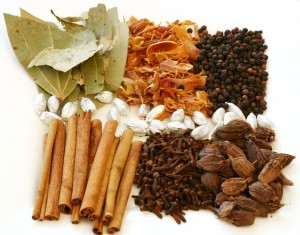 With over 5000 years in its history book, Chinese cuisine is known for using herbs and dry spices to enhance flavors. I have demonstrated this tradition in this recipe. Although I’ve come across plenty of recipes calling for over 30 types, for a beginner it is absolutely not necessary to stock up your pantry with all the rare herbs and spices besides the below:
With over 5000 years in its history book, Chinese cuisine is known for using herbs and dry spices to enhance flavors. I have demonstrated this tradition in this recipe. Although I’ve come across plenty of recipes calling for over 30 types, for a beginner it is absolutely not necessary to stock up your pantry with all the rare herbs and spices besides the below:
Star Anise (八角) is widely used in Chinese cuisines in all regions. This fragrant spice is used in my meat dishes including the famous red cooked pork.
White Pepper powder (白胡椒粉) is a very common condiment used in Chinese cooking. It is used in place of black pepper.
Sichuan Peppercorn (花椒) is essential in many Sichuan (Szechuan) dishes. It has a unique aroma that leaves your tongue with a tingly numbness. The powder form Sichuan peppercorn is usually used in cold dishes.
Dried Chili (for Sichuan cuisine) is something I use a lot when I make stir-fry dishes even it’s not a Sichuan dish. The dried chili adds a special fragrant more than being spicy.
Five-spice powder (五香粉) is used extensively in many Chinese dishes as an “all-in-one” spice mix. The common mix is star anise, cloves, cinnamon, Sichuan peppercorn, and fennel seeds.
This list is by no means extensive and exhaustive but it should prepare you to explore the rich history of Chinese cuisines. If you have not done so, I’d also encourage you to head over to the recipe index page to explore all the wonderful Asian dishes.
